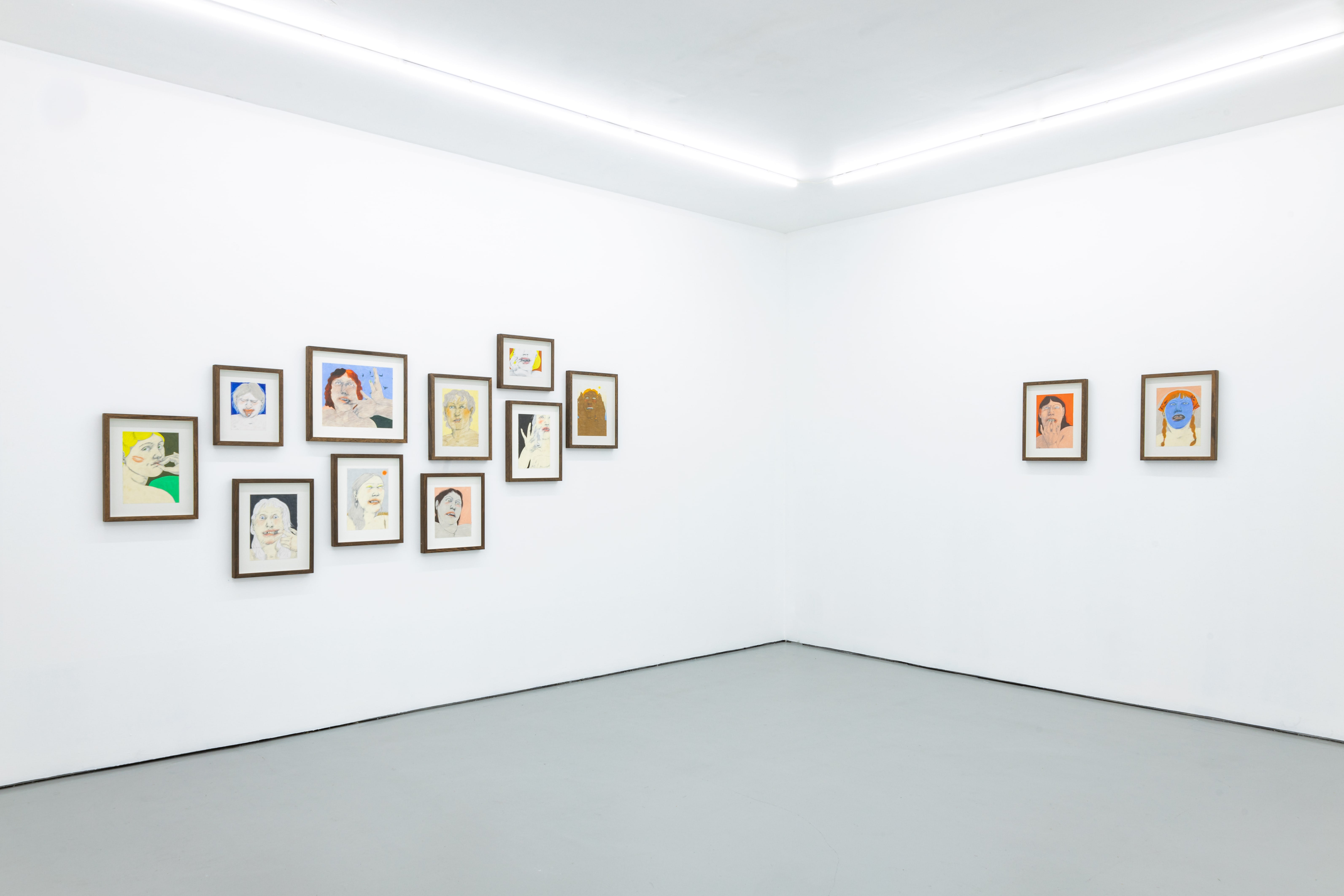
COMA is pleased to present a solo exhibition, titled ‘Amalgam’, by Cornwall-based artist Nettle Grellier (b.1993), on view 5 September – 7 October in the Darlinghurst gallery. This is the artist’s first presentation with COMA.
Often scratching at their gums, gnashing their teeth, or biting their fingernails, the suite of women that occupy Grellier’s Amalgam overshare, are over comfortable and often overbearing. They pull us in close enough to smell their breath.
Amalgam (the material used for dental fillings) visually and theoretically examines teeth; their symbolism historically throughout popular culture, religion and folklore, and the age-old stereotype that British people have bad teeth and how this popular belief points towards more complicated issues of government policy, wealth distribution and inaccessibility to health care.
Having grown up in Gloucestershire, Grellier’s practice looks at the intricacies of local fables, ritual, storytelling, and gossip that are woven into the fabric of a small-town communities. The cropped and intimate portraits draw us towards the mouths of these women, as if we are about to become a kink in their chain of salacious small-town whispers.
Teeth have been the subject of gossip and tradition since the middle-ages, passing and peddling stories of the enamel stones throughout history became a game of superstition and caution. The burning of milk teeth was a precaution taken to protect oneself in death, for those who didn’t correctly dispose of their baby teeth would search for them in the afterlife for all eternity. Grellier hints at such fables in the work Should I just wait here, whereby a young woman delicately balances a small tooth in the palm of her hand, gesturing, offering, and letting go of a part of herself to ease her superstitions.
As children we are told to brush and look after our teeth, otherwise a fairy like figure, a hag, or a witch would pay a visit. Whatever truth lies in this fable, Grellier’s work make us believe in these fairy tales, as their rawness, messiness and enigmatic nature instils in the viewer the belief that a visit from a menacing crone must imminent.
Despite the British’s reputation for bad teeth – with crooked, discoloured, unaligned, yellow smiles- their desire for good teeth can be traced throughout history and linked to medieval grave robbing practices. In Britain in the 18th century, experimentation began with tooth implants, an expensive procedure even for the wealthy, people turned to more cost-efficient methods- extracting teeth from the mouths of the dead. The characters in Grellier’s suite of work perform extractions, robberies, and implants of their own – their fingers like dentistry apparatus they use to pull back their lips to ready themselves for a removal or operation.
